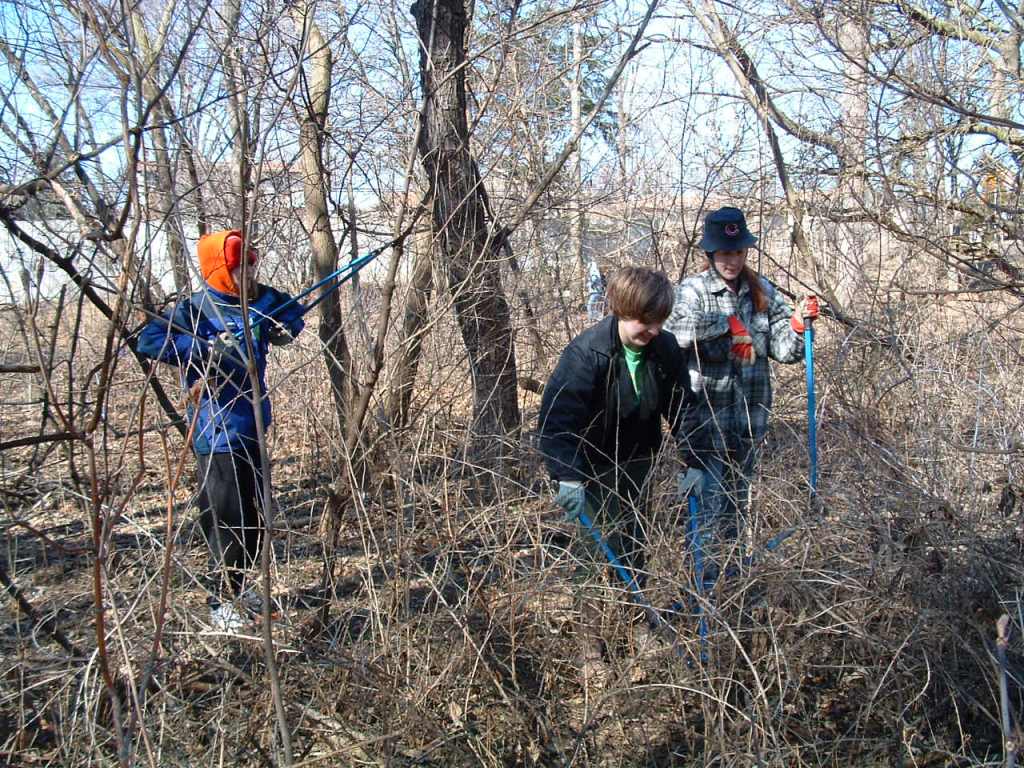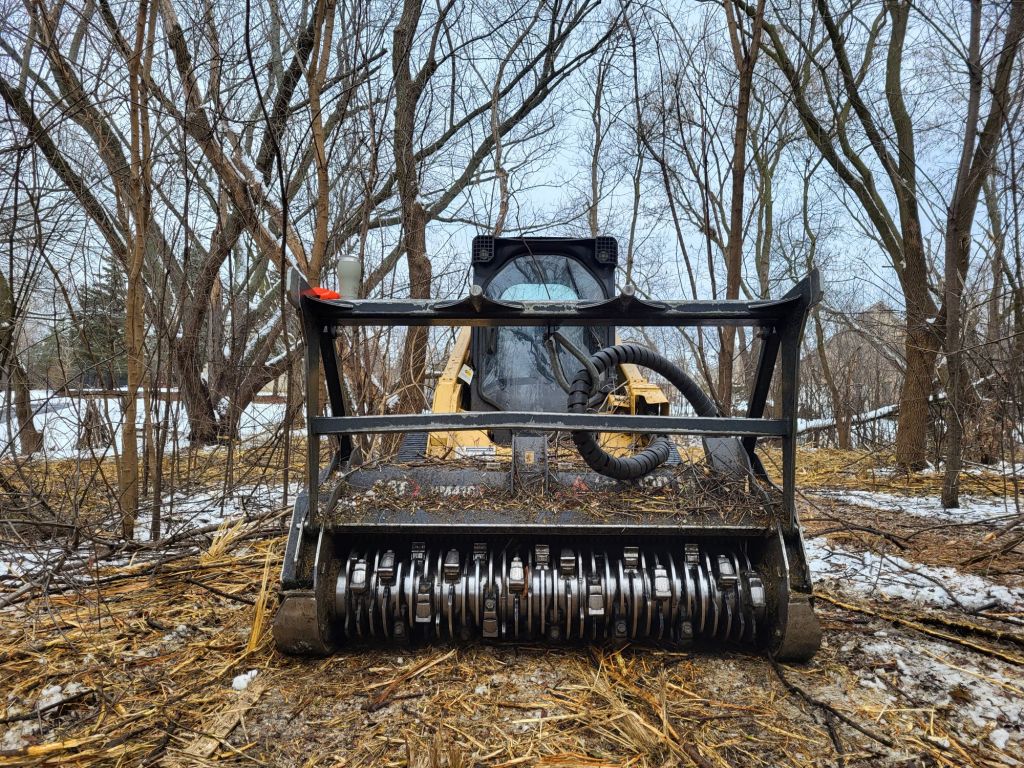
By Matt McBrien
Public landowners, including Schaumburg Park District, have long recognized the importance of controlling invasive plant species growing within the natural areas they are charged with caring for. This work has always been tedious and laborious, with lots of stooping, slashing, pulling, cutting and dragging of cut brush. Places like Spring Valley have relied on volunteer labor over the years to accomplish much of this work, often during the winter, when traipsing through a dense thicket is somewhat easier.

Well, the long winter days of invasive brush removal with lopper and saw may be numbered, or at least greatly reduced. A relatively new piece of equipment is gaining popularity in the world of natural resource management for its efficient and effective ability to transform the landscape. The typical target species, European buckthorn (Rhamnus cathartica), is the nemesis in natural areas restoration projects across the Midwest. A cadre of weedy and invasive associates (honeysuckle, glossy buckthorn, red mulberry, etc.) are also targeted. The generic name for this new equipment is forestry mower. Originally developed by the Fecon company about two decades ago and given the name Bull Hog for its ability to quickly consume trees.

Forestry mowers play a crucial role in the effective removal of European buckthorn, an invasive plant species that poses a significant threat to natural ecosystems throughout Illinois and most midwestern states. Buckthorn is an aggressive invasive species native to Europe and Asia. Introduced to North America in the 19th century, it has since spread rapidly, displacing native vegetation and disrupting the ecological balance. Its botanical name – cathartica – refers to the effect its dark berries have on birds, who consume the berries and soon after spread the seeds in their droppings. Buckthorn is known for its prolific growth, forming dense thickets that out-compete native plants for sunlight, nutrients, and water. Its presence within the ecosystem has had adverse effects on biodiversity, soil health, and wildlife habits, especially within Midwestern woodlands.
Traditional methods of buckthorn removal, typically manual cutting or chainsaw removal, have proven to be labor intensive and time consuming. Over the past decade however, forestry mowers have emerged as a powerful and efficient solution for land managers focused on restoring large native habitats. These are specialized pieces of equipment designed to selectively clear large areas of vegetation, making them well suited for tackling invasive species like buckthorn.

These mowers are typically mounted on heavy duty equipment such as skid steers, excavators, or tractors, providing the necessary power and maneuverability to navigate through dense stands of vegetation. Equipped with robust carbide teeth, forestry mowers effectively cut and mulch vegetation, including woody plants like buckthorn and its weedy associates. Their ability to handle a variety of terrain makes them one of the most versatile tools for tackling large infestations in diverse landscapes.
A key advantage of using forestry mowers for buckthorn removal is their efficiency in covering large areas quickly. The high cutting capacity and speed of these machines enable operators to clear vast expanses of land, reducing the time and resources required for invasive species management. This efficiency is particularly helpful in areas with extensive buckthorn infestations where it is crucial to stop the advance of invasive species and shift the focus to restoring native plants.

Forestry mowers are also adaptable to different vegetation densities, allowing operators to adjust cutting heights and settings based on specific characteristics of the infested area. The flexibility ensures that the mower can effectively target buckthorn and other invasives while minimizing damage to desirable native vegetation. The mulching capability of forestry mowers further influences habitat restoration by converting cut vegetation into nutrient rich mulch that promotes soil health, minimizes erosion, and suppresses some weed growth in subsequent years.
The durability of the cutting teeth allows the operator to reduce a 6-to-8-inch diameter trunk, the size of a mature buckthorn tree, into a ground cover of wood chips in less than a minute. In most cases, however, follow-up monitoring and treatment is required. With disturbance to the upper layer of soil, regeneration can create a new crop as seed becomes reintroduced back to the surface. Or trees that have been previously removed begin to resprout from the shallow root systems in response to cutting. In these instances, a systemic herbicide can be applied to these sprouts to prevent re-population of the site. In most cases, native plants need to be reintroduced to the cleared areas in order compete with the weedy species.

Forestry mowers have proven to be highly effective in the removal and control of a variety of invasive woody species found on the landscape. Their efficiency, and adaptability to further minimize environmental impacts have led to a greater number of agencies utilizing this as a tool to combat the spread of invasive species. As the importance of ecological restoration and invasive species management continues to grow, so does the use of this machine as the most versatile tool in the box.